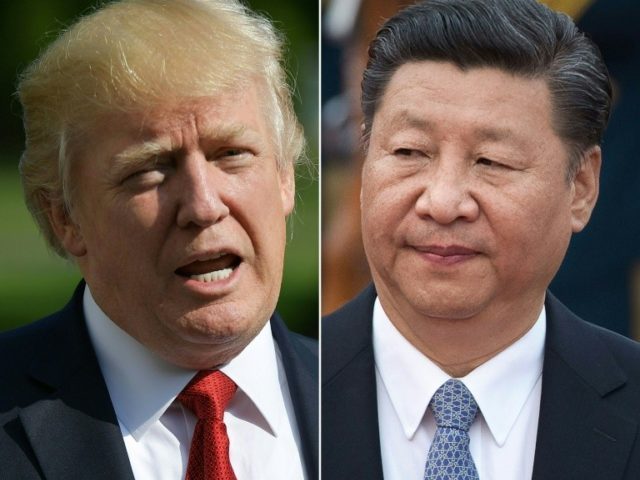The Pentagon’s blueprint for U.S. defense strategy cites China as a “strategic competitor,” taking a more confrontational stance towards the Asian nation than the previous administration.
“China is a strategic competitor using predatory economics to intimidate its neighbors while militarizing features in the South China Sea,” the National Defense Strategy, which was released Friday morning, stated.
The Obama administration’s Defense Strategic Guidance in 2012 had a different tone on China: “Our two countries have a strong stake in peace and stability in East Asia and an interest in building a cooperative bilateral relationship.”
While the Obama administration’s defense guidance prioritized counterterrorism, the new defense strategy prioritizes the challenge of great power competition from nations like China and Russia.
“Inter-state strategic competition, not terrorism, is now the primary concern in U.S. national security,” it said.
The strategy cites Russia as another “revisionist” power and competitor that is seeking to challenge U.S. prosperity and security, undermine the North Atlantic Treaty Organization, and seek “veto authority” over its neighbors.
They are “undermining the international order from within the system by exploiting its benefits while simultaneously undercutting its principles and ‘rules of the road,'” it said.
The strategy also cites “rogue regimes” North Korea and Iran and terrorists as threats the U.S. will seek to deter.
The strategy makes clear that the U.S.’s military advantage over these actors is eroding, and the Pentagon needs to become more agile to maintain the edge and defeat them in all domains.
“For decades the United States has enjoyed uncontested or dominant superiority in every operating domain. We could generally deploy our forces when we wanted, assemble them where we wanted, and operate how we wanted. Today, every domain is contested — air, land, sea, space, and cyberspace,” it said.
The strategy outlined steps the Pentagon is taking and will take to streamline its costly and unwieldy weapons-buying process, which can result in top performance weapons that are outdated for today’s threats.
The strategy also emphasized the importance of U.S. allies and partners, while at the same time asking them to contribute more to their mutual security.
“Mutually beneficial alliances and partnerships are crucial to our strategy, providing a durable asymmetric strategic advantage that no competitor or rival can match,” it said.
At the same, it said, “We expect allies and partners to contribute an equitable share to our mutually beneficial collective security, including effective investment in modernizing their defense capabilities.”
The strategy also specifically mentions “Article 5” of the North Atlantic Treaty Organization (NATO), saying that commitment to it is “vital” to U.S. security. But, it added, “We expect European allies to fulfill their commitments to increase defense and modernization spending to bolster the alliance in the face of our shared security concerns.”

COMMENTS
Please let us know if you're having issues with commenting.